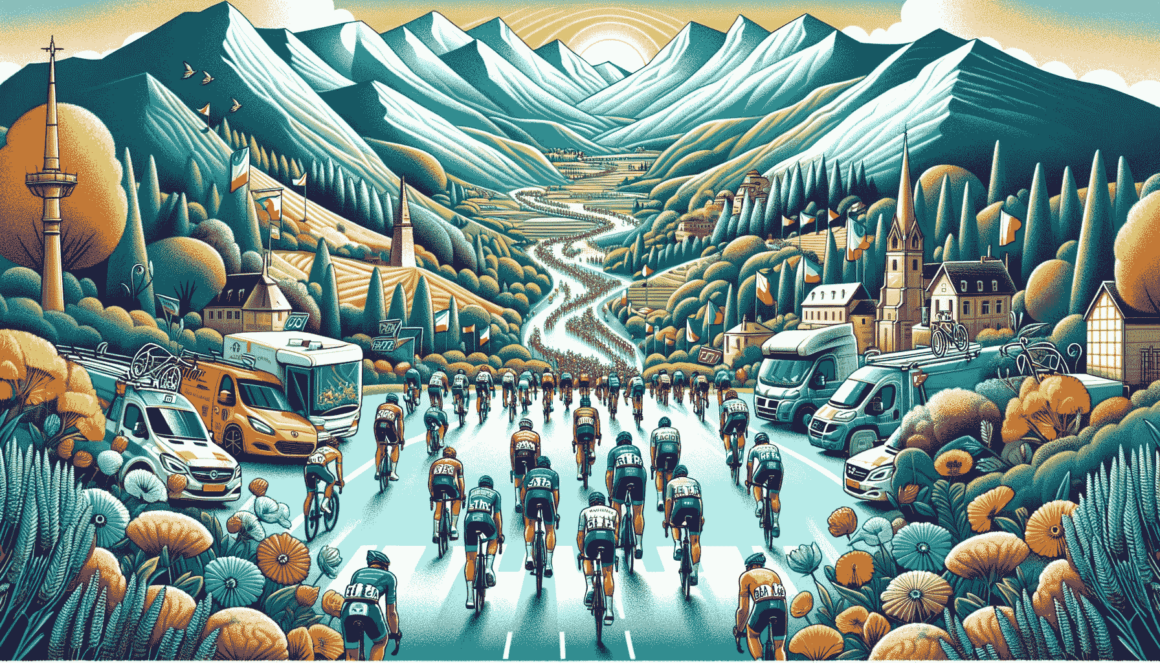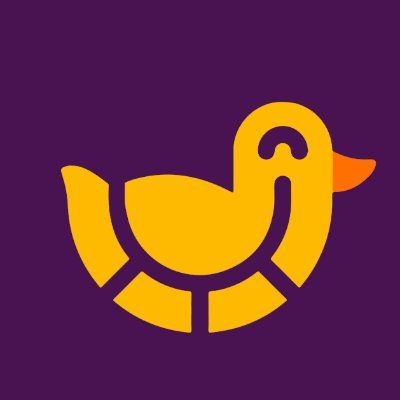Learn About the Upcoming Tour de France Stages for 2024
With the famous Tour de France just around the corner (from 16th of June until 28th of July), you’ll want to know everything about the 2021 version of this annual multi-stage cycling race for men.
So, here is our guide to the Tour de France stages that every passionate cyclist must know about.
Let’s begin.
What Are the Tour de France Stages?

If you didn’t know or could use a reminder, here it is — The Tour de France is composed of 21 stages that take place over 23 days.
According to many, the Tour de France is the world’s most challenging and prestigious cycling race. Moreover, the Tour de France is the second most-watched sporting event globally.
Wondering what the 2021 Tour de France stages are? We did the research for you so that you can relax and enjoy the most important details. Here they are.
Tour de France Stage 1 (June 26, 2021)
On Saturday, the cyclists will spend the first day of the Tour de France passing through the hilly Locronan and Quimper. The stage will be 116.1 miles (187 km) long, and the starting town will be Brest (31st time being a stage city), while Landerneau (1st time being a stage city) will be the finish of stage 1.
Tour de France Stage 2 (June 27, 2021)
The length of this stage will be 113 miles (182 kilometers), and the riders will go through the hilly terrain of Perros-Guirec, finishing at Mûr-de-Bretagne Guerlédan. The first half of the stage will be incredibly challenging, as the average gradient goes up to nearly 10%.
Tour de France Stage 3 (June 28, 2021)
The cyclists will embark on a flat yet exciting 113 miles (182 kilometers) long route from Lorient to Pontivy on Monday. Tour de France’s third stage is anticipated to be a sprint finish. The ending point of stage 3 will be close to the breathtaking Château des Rohan.
Tour de France Stage 4 (June 29, 2021)
Tuesday will be all about the 94.4 miles(152 kilometer-long), flat-road trip from Redon to Fougères. Without a doubt, the cyclists will bask in the beauty of inland Brittany. Moreover, this trip across Argoat will be another thrill for sprinters.
Tour de France Stage 5 (June 30, 2021)
On Wednesday, the fifth day of Tour de France, the race will host the first of two individual time trials. In fact, the nearly flat 16.7 mile (27-kilometer) course between Changé and Laval will be the first true challenge for the contestants.
Tour de France Stage 6 (July 1, 2021)
On Thursday, the contestants will travel from Tours to Châteauroux. At the end of the 89.4 mile(144-kilometer) ride, we can expect a quick finisher. Here’s a fun fact — Châteauroux was a part of the Tour de France in 2011 too.
Tour de France Stage 7 (July 2, 2021)
Stage 7 of the Tour de France is the longest in the 2021 edition of the prestigious race – it will measure a whopping 89.4 miles(248 km) from Vierzon to Le Creusot. It is the longest stage of the 2021 Tour de France — and the longest one in the last two decades.
Tour de France Stage 8 (July 3, 2021)
The Tour de France’s eighth stage from Oyonnax (happening on Saturday) is a 93.8 miles (151-kilometer) race with a steep final third. First, the riders will have to conquer three challenging Alpine climbs, after which they will plunge to Le-Grand Bornard.
Tour de France Stage 9 (July 4, 2021)
The ninth stage of Tour de France from Cluses will be exhilarating for the cyclists and the sports viewers.
It includes five climbs. Following a 13 mile (21-kilometer) rise, the 90 miles (145-kilometer) long race will conclude in the famous ski resort of Tignes. At Tignes, the cyclists will rest on Monday.
Tour de France Stage 10 (July 6, 2021)
After a day of rest, for stage ten, the Tour de France goes south. Namely, the race begins in Albertville and continues across the Rhône and the Isère valleys before ending in Valence, 115.5 miles (186 km) away from the start.
Tour de France Stage 11 (July 7, 2021)
On Wednesday, the Tour de France’s 11th stage includes a dual climb of the incredible Mont Ventoux. The course is 123.6 miles (199 km) long and culminates in a slope into Malaucène.
As a side note, the climb will include the near-unprecedented passage through Sault.
Tour de France Stage 12 (July 8, 2021)
The next day, the cyclists will pass through the breathtaking Gorges de l’Ardèche. The race will happen between Paul-Trois-Châteaux and Nîmes, covering 100 miles (161 km).
It’s important to note that extra caution will be required from the riders. Namely, echelons may occur due to the wind on the large open roads.
Tour de France Stage 13 (July 9, 2021)
On Friday, the contestants will start their travels from Nîmes to Carcassonne. The terrain type is flat, and the length of the race will be 136.7 miles (220 km). Interestingly, Carcassonne was mainly featured as a starting place in more recent years.
Tour de France Stage 14 (July 10, 2021)
After flat terrain comes a bumpy ride to the foothills of the Pyrenees, Quillan. The road is 114.3 miles (184 km) long, and the stage will start from Carcassonne on Saturday.
Tour de France Stage 15 (July 11, 2021)
Stage fifteen will be incredibly challenging for contestants. On Sunday, the cyclists will go on a 119.3 mile (192-kilometer) long mountainous trip from Ceret to Andorre-La-Vieille. It’s also interesting to note that this stage will have four climbs before a leap finish.
On Monday, the competitors will take a day off to recharge.
Tour de France Stage 16 (July 13, 2021)
Following a day of well-deserved rest, cyclists will put on their gear and begin their next journey from Pas de la Case to the hilly Saint-Gaudens. The total length of the road is 105 miles (169 kilometers).
Tour de France Stage 17 (July 14, 2021)
The highlight of Tour de France’s stage 17 will be Bastille Day. In 2021, the road is 109.9 miles (177 km) long and will take cyclists across the Pyrenees mountains.
The competitors will finish at Col du Portret after a challenging climb up the Col d’Azet-Val Louron and the Col de Peyresourde.
Tour de France Stage 18 (July 15, 2021)
Say goodbye to the mountain stages of the race. Namely, at “only” 80.7 miles (130 km), stage 18 is the last one of its kind for this year’s race. The vast majority of the uphill activity will occur during the final 31 miles(50 kilometers) of the race.
First comes Col du Tourmalet, followed by a finale in Luz-Ardiden.
Tour de France Stage 19 (July 16, 2021)
On Friday, the cyclists embark on the 19th stage of the race. This stage runs from Mourenx in the foothills of the Pyrenees to a finishing line close to Bordeaux, Libourne. Overall, the stage is 126.1 miles (203 kilometers) long and takes place on flat terrain.
Tour de France Stage 20 (July 17, 2021)
The second and closing time trial of the Tour de France will happen on Saturday. The path from Libourne to Saint-Emilion is 19.2 miles (31 kilometers) long and takes place through the mesmerizing vineyards in Bordeaux’s proximity.
Tour de France Stage 21 (July 18, 2021)
The final clash of the 2021 edition of Tour de France will most likely be a sprint on the Champs-Élysées path. If you are wondering — Elysium is the last resting spot for the noble and courageous souls in Greek mythology. In French, this is known as Champs-Élysées.
Beyond Tour de France Stages
We promised the most-known facts about the Tour de France, so here they are. In the following section, you’ll learn more about the race’s distance, the average speeds, the jerseys, and more.
Tour de France Distance
As a reminder, the 116.1 miles (187-kilometer) first stage from Brest to Landerneau kicks off the 2021 edition of the Tour de France on June 26th, a Saturday. The cumulative Tour de France length is 2,102 miles (3,383 kilometers).
Following the start in Brest, the first four stages of Tour de France are hosted in the Brittany area. It is essential to know that competitors will tackle one stage per day.
Like always, in 2021, the Tour de France stages length will vary — the longest one is stage 7 from Vierzon to Le Creusot, with 151.1 miles (248 kilometers). Fortunately, cyclists will have the chance to recharge their batteries in Tignes and Andorra, just before stage 10 and stage 16.
Tour de France Jerseys
The jerseys that the cyclists wear for Tour de France represent the best competitors in various categories. The race’s standings can shift drastically from one day to another, particularly early on.
The Tour de France jersey’s colors include white, white with red polka dots, yellow, and green. Let’s briefly discuss what each of these jersey colors means.
Yellow
The signature jersey of this prestigious race is the maillot jaune. Namely, it identifies the Tour de France’s current leader, and it’s assigned at the end of each stage. The one who gets it at the end of the race is the overall winner.
White
The fastest cyclist under the age of 25 wears the white jersey. Here’s a fun fact — this jersey was first worn in 1975.
White with red polka dots
One of the most interesting Tour de France jersey colors is white with red polka dots. This jersey is also known as the “King of the Mountains” jersey. The first cyclist to reach the crest of marked mountains and hills earns the points — and this prize.
Green
Sprinters wear the maillot vert or the green jersey. Points are given to the initial 10 to 25 riders to finish the race at each stage. Between 1996–2001, Erik Zabel (Germany) set a record by winning the race’s last green jersey — six times in a row!
Tour de France Average Speeds
Curious about how you would fare in a race against a Tour de France professional cyclist? Read on and see for yourself.
Time Trial Speed (Average)
A Tour de France professional can generate more power over extended periods. So, he can also finish a time trial around 20 minutes quicker than the everyday cyclist. For time trials, the average Tour de France speed ranges from 29 to 31 mph.
Speed on Flat Terrain (Average)
A professional Tour de France cyclist is capable of an average of 25 to 28 mph. In comparison, a typical cyclist will go from 17 to 18 mph. Judging by these figures, it’s safe to say that the Tour de France average speeds on flat terrains are impressive.
Cobblestone Speed (Average)
Pavé, or cobblestones, are an essential section for the Tour de France. Namely, professionals such as Greg Van Avermaet and Peter Sagan have become famous thanks to their performance on cobblestone roads. The average speed for this challenging sector is from 22 to 24 mph.
FAQ
What are the stages of the Tour de France?
There are 21 stages in 2021. These are:
- Brest – Landerneau
- Perros-Guirec – Mûr-de-Bretagne
- Lorient – Pontivy
- Redon – Fougères
- Changé – Laval
- Tours – Châteauroux
- Vierzon – Le Creusot
- Oyonnax – Le Grand Bornand
- Cluses – Tignes
- Albertville – Valence
- Sorgues – Malaucène
- Saint-Paul-Trois-Châteaux – Nîmes
- Nîmes – Carcassonne
- Carcassonne – Quillan
- Céret – Andorra la Vella
- Pas de Case – Saint-Gaudens
- Muret – Col du Portet
- Pau – Luz-Ardiden
- Mourenx – Libourne
- Libourne – Saint-Émilion
- Chatou – Paris
How far is a stage in the Tour de France?
A stage in the Tour de France is around 111.8 miles (180 kilometers) long. In 2021, the longest stage is stage 7 from Vierzon to Le Creuseot — 89.4 miles (248 kilometers).
Who is the best Tour de France cyclist?
In the world of male soccer, many believe that the champion’s title goes to Lionel Messi, but in the world of cycling, Eddy Merckx dubbed the “Cannibal,” takes the lead.
Merckx won the yellow jersey, the polka dot, and the green jersey in a single Tour. Believe it or not, no one has ever accomplished this except Merckx.
What is the hardest stage in the Tour de France?
In the 1926 edition of Tour de France, stage 10 is considered the most demanding stage for cyclists. Bayonne was the starting point, followed by four challenging climbs — Peyresourde, Tourmalet, Aubisque, and Aspin. Unfortunately, the weather was horrific as well.
How long is stage 6 of the Tour de France?
Stage 6 of the 2021 race is 89.4 miles (144 km long). The journey will start from Tours and finish in Châteauroux. As for the terrain type, it is flat but demanding.
What is the yellow shirt in the Tour de France?
The yellow jersey is granted to the rider in the lead at the end of a stage. So, different Tour de France riders may wear the yellow jersey at different stages of the event. Finally, the overall winner receives the jersey at the end.
In a nutshell, the current winner wears the yellow jersey in the Tour de France. The cyclist with the yellow-colored jersey at the end of the race has topped the general classification (GC) of Tour de France.
Conclusion
So, there you go, everything you possibly need to know about the 2021 Tour de France stages. We can see that the Tour de France is a massive event in the world of competitive sports. And with how popular and entertaining it is, it’s no surprise that sports betting is a lucrative business.
Make sure to share this guide on the Tour de France stages with friends, family members, and other cycling fanatics.
 BC.Game
BC.Game  7Bit
7Bit  Ducky Luck
Ducky Luck  Red Dog
Red Dog